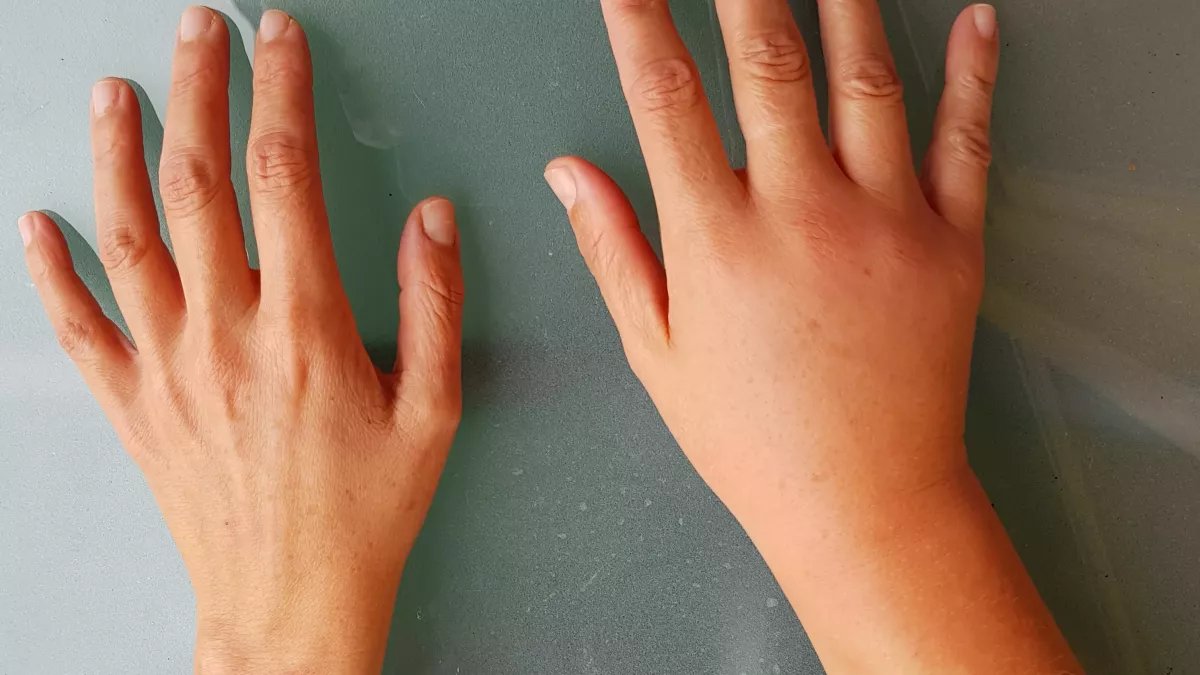Montreal masso-kinesitherapy

Lymphedema is a chronic disease that can cause complications if it is left untreated. When the lymphatic system is damaged or poorly developed, it cannot fulfill its function of transporting lymphatic fluid as it normally would. This fluid then accumulates in tissue, causing swelling, often in the arms and legs.
There are two types of lymphedema: primary and secondary lymphedema.
Primary lymphedema is caused by congenital defects in the lymphatic system. It is often triggered by something (e.g. pregnancy, minor injuries, infection, etc.). Symptoms can appear at birth or later in life.
Secondary lymphedema occurs after a specific event has damaged the lymphatic system or develops from a health condition, such as prolonged immobility or an infection. Most often, lymphedema appears after an injury, surgery or cancer.
Damaged lymph nodes and lymphatic vessels are a known side effect of cancer, cancer treatments (radiotherapy) and related surgeries. (For example, it is not uncommon for an arm to swell after a breast and/or axillary lymph nodes are removed as part of a breast cancer treatment).
It should be noted that lymphedema can take anywhere from a few months to a few years to manifest after events or surgeries.
Combined decongestive therapy is the ideal treatment for secondary lymphedema. This therapy aims to significantly reduce the swelling on the affected part of the body in effort to improve its mobility and functionality. Plus, it helps stabilize the lymphedema condition, prevents a number of complications and promotes better overall health.
In its intense initial phase, combined decongestive therapy entails several successive manual lymph drainage sessions (normally for two weeks, depending on the particular case) combined with multilayer bandaging that must be kept on the affected limb for a certain period of time.
The bandaging keeps the limb in a state of compression to reduce the edema as much as possible. In the next phase, compression garments* prescribed by a doctor will need to be worn. This not only prevents complications and keeps swelling to a minimum, but also ensures the long-term success of the treatment.
In the final phase, this therapy is rounded out by decongestive and respiratory exercises, skin care and healthy lymphedema self-management practices.
*The RAMQ reimburses a portion of the cost of compression garments and multilayer bandaging if you are diagnosed with primary or secondary lymphedema by a doctor.
Important notes:
- As an initial phase at Altermed Clinic, starting in November 2022, I will provide treatments for secondary arm lymphedema, which often appears after breast cancer. I will also offer preventive treatments (for the early stages of swelling, to keep the lymphedema from developing into manifest lymphedema) and occasional follow-up treatments to make sure that the lymphedema is stable and the compression garments are still effective.
- Please note that the therapies and their duration vary from person to person and must be determined on an individual basis, which is why an initial assessment must be scheduled before any of these therapies can be started.
- In all cases of lymphedema, please email or call me before making an appointment, so that I can make sure that I am able to provide the treatment that you need.
I look forward to improving your well-being.
Sibylle Frey
CATCM member
LAQ member
Feel free to contact me for an assessment or if you have questions:
sibylle.frey@cliniquealtermed.com
Altermed Clinic: 514 287-3289


